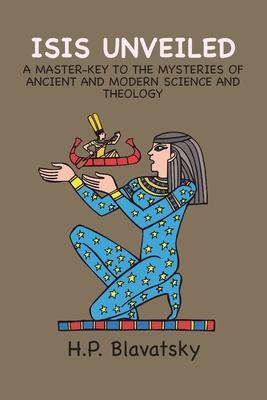The work was originally entitled The Veil of Isis, a title which remains on the heading of each page, but had to be renamed once Blavatsky discovered that this title had already been used for an 1861 Rosicrucian work by W. W. Reade. Isis Unveiled is divided into two volumes. Volume I, The "Infallibility" of Modern Science, discusses occult science and the hidden and unknown forces of nature, exploring such subjects as forces, elementals, psychic phenomena, and the Inner and Outer Man. Volume II, Theology, discusses the similarity of Christian scripture to Eastern religions such as Buddhism, Hinduism, the Vedas, and Zoroastrianism. It follows the Renaissance notion of prisca theologia, in that all these religions purportedly descend from a common source; the ancient "Wisdom Religion".

Isis Unveiled: A Master-Key to the Mysteries of Ancient and Modern Science and Theology
The work was originally entitled The Veil of Isis, a title which remains on the heading of each page, but had to be renamed once Blavatsky discovered that this title had already been used for an 1861 Rosicrucian work by W. W. Reade. Isis Unveiled is divided into two volumes. Volume I, The "Infallibility" of Modern Science, discusses occult science and the hidden and unknown forces of nature, exploring such subjects as forces, elementals, psychic phenomena, and the Inner and Outer Man. Volume II, Theology, discusses the similarity of Christian scripture to Eastern religions such as Buddhism, Hinduism, the Vedas, and Zoroastrianism. It follows the Renaissance notion of prisca theologia, in that all these religions purportedly descend from a common source; the ancient "Wisdom Religion".